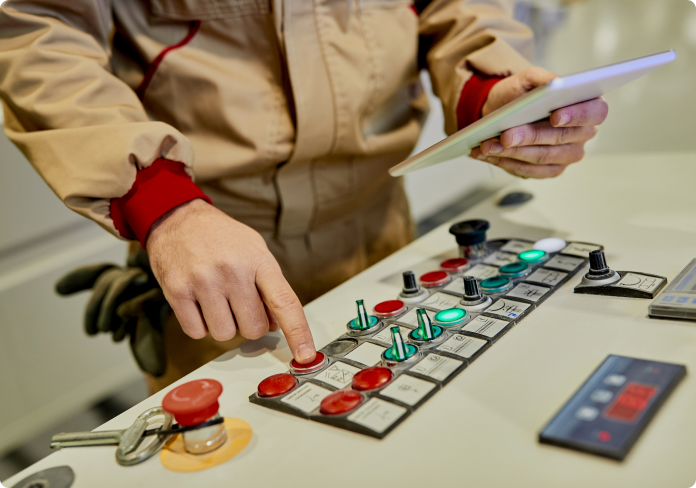Harness the Power of Pulse and Pulse Reverse Current (PRC) Rectifiers
Advint Incorporated is driven by a passion for providing businesses like yours with innovative DC rectifier technology. Our innovative solutions are transforming electroplating and anodizing across power supply industries driving efficiency, precision, and reliability to new heights. We offer an inventory of select products that can be delivered to your door within a week, and all specifications can be custom made. Comprising of electrochemists, electrical and electronics engineers, our team is fully committed to your success, offering an abundance of research and practical knowledge.
Contact Us for Pricing
Pulse Plating:
Pulse plating is an advanced electrodeposition technique that uses periodically varying current to deposit a metal or an alloy onto a substrate. Unlike traditional direct current (DC) plating, pulse plating provides precise control over the deposition process, resulting in superior coatings with enhanced properties.
Advantages
- Superior Deposit Quality: Achieve smoother, more uniform coatings with finer grain structures.
- Enhanced Material Properties: Increase hardness, wear resistance, and corrosion protection.
- Improved Throwing Power: Plate complex geometries and recessed areas more effectively.
- Reduced Internal Stress: Minimize cracking and peeling in your coatings.
- Increased Efficiency: Deposit metals at higher rates while using less energy.
Pulse Reverse Current (PRC) Plating
Pulse periodic reverse current plating builds on the pulse plating concept by incorporating brief periods of reverse current during the plating cycle. This approach offers greater control over the deposition process.
Advantages:
- Exceptional Leveling: Achieve ultra-smooth surfaces, even on rough substrates.
- Superior Distribution: Plate uniformly across complex shapes and high aspect ratio features.
- Precise Alloy Composition Control: Fine-tune the properties of multi-metal deposits.
- Reduced Dendrite Formation: Minimize unwanted growth and improve deposit quality.
- Optimized Additive Performance: Enhance the effects of brighteners and other plating additives.

Is Pulse or Pulse Reverse Current Plating the Right Solution?
If you’re facing any of these challenges, pulse or pulse reverse plating could be the answer you’ve been searching for:
- Inconsistent coating quality or thickness
- Difficulty plating complex geometries
- High rejection rates due to poor adhesion or appearance
- Excessive material waste or energy consumption
- Need for improved wear resistance or corrosion protection
- Desire to reduce or eliminate toxic additives in your plating process
Understanding Pulse and Pulse Reverse Plating
To fully appreciate the power of these technologies, let’s delve into the principles behind pulse and pulse reverse plating:
- Mass Transport Control: By pulsing the current, we create favorable concentration gradients near the cathode surface, allowing for higher deposition rates and improved deposit quality.
- Nucleation and Growth: Short, high-current pulses promote the formation of many small nuclei, leading to finer grain structures and enhanced material properties.
- Double Layer Effects: Pulse plating can manipulate the electrical double layer at the electrode-electrolyte interface, influencing adsorption processes and deposit characteristics.
- Selective Dissolution: In pulse reverse plating, brief reverse current periods can selectively remove fewer stable deposits, improving overall coating quality and leveling.
Choosing the Right Equipment
To harness the full potential of pulse and pulse reverse plating, you need a reliable, high-performance rectifier. Look for these key features when selecting your equipment:
- Precise waveform control for optimal results
- High frequency capability (up to 10 kHz or more) to handle advanced applications
- User-friendly interface for easy parameter adjustment
- Data logging and process monitoring capabilities for quality control
- Robust design built to withstand industrial environments

Pulse Reverse Current (PRC) Rectifiers
For businesses requiring the utmost precision and control, consider investing in a high-speed pulse reverse rectifier. These advanced units offer:
- Positive / Reverse High-Speed Pulse Control
- Positive / Reverse High-Speed Switching
- Output options ranging from 40A to 2000A normal peak current and 100A to 5000A reverse peak current
- Constant current control accuracy of ±3.0%
- Normal polarity pulse width of 10-99.9 ms and reverse polarity pulse width of 0.1-2.0 ms
- Normal/reverse current switching time as low as 50 μs

Get a Quote Today
Are you ready to pulse into the future of electroplating and anodizing, and stay ahead of the competition? Contact Advint’s team of experts today for a personalized consultation on how pulse and pulse reverse plating can transform your operation. We’ll work with you to:
- Analyze your current plating processes
- Identify opportunities for improvement
- Develop a customized implementation plan
- Provide ongoing support and optimization
